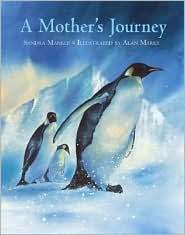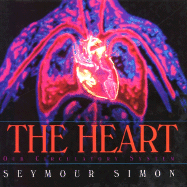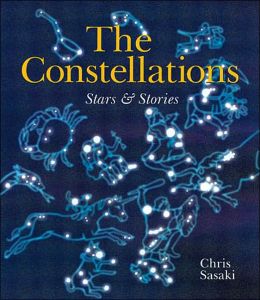All of the books below (both fiction
and non-fiction) have been approved by the National Science Teachers
Association and would be great books for your child to read. All of the book
descriptions come from Amazon.com, and by clicking on the title of each book
you will be directed to that book's page on Amazon.com.
With evocative watercolor-and-ink
images, this beautiful picture-book tribute to female emperor penguins plunges
children into the harsh icy landscape and frigid waters of Antarctica, home to
the penguins. The understated, lyrical text follows a young mother penguin as
she lays her first egg and then, leaving her mate to tend it, joins the other
females as they travel for five days to reach the pack ice and food. Once
there, she swims day after day, swallowing her fill of fish and watching for
dangerous seals and hunters. In all, she travels 930 miles on a zigzag course
until the beginning of August, when instinct tells her it's time to return to
her mate and the egg's hatching.
With a dramatic first-person
narrative and close-up photography that brings kids into the thick of the
action, National Geographic photographer Robert B. Haas gives us a rare glimpse
into the struggles for survival in the African wilderness. We accompany him in
his jeep, camera primed and ready to react. With stories and photographs that
portray actual events, we wait patiently to spot leopard cubs coming out of
their cave to play; we are charged by protective adult elephants who surround a
new-born; we move side-by-side with a clan of wild dogs as they hunt impalas.

Alien Deep outshines the competition by following a recent, specific
deepwater exploration that illuminates new knowledge about our oceans.
Following alongside a current expedition, Alien Deep will enable children to
observe the processes involved in marine exploration. As scientists delve into
the mysterious depths of the ocean, children will be able to witness the
excitement of scientific exploration and discovery through enriching text and
stunning photography. By describing a recent exploration, children will be able
to read and see the new methods and technology that oceanographers use to
conduct research.
6) Odd Boy Out: Young Albert Einstein, by Don Brown
This well-crafted picture-book biography focuses on
Einstein's hard-to-classify brilliance, which led to awesome scientific
discoveries, but all too often left him a misunderstood outsider. Brown
describes his subject's loving, cultured parents who were frequently nonplussed
by their son's behavior and temper. He found himself the "odd boy" at
school, and as the only Jewish student, was sometimes taunted by other
children. He puzzled his instructors as well; though clearly gifted in science,
math, and music, he was an indifferent student in most subjects. This book will
pique the interest of readers with little or no knowledge of Einstein.
7) The
Man Who Walked Between the Towers, by Mordicai
Gerstein
As this story opens, French funambulist Philippe
Petit is dancing across a tightrope tied between two trees to the delight of
the passersby in Lower Manhattan. Gerstein places him in the middle of a
balancing act, framed by the two unfinished World Trade Center towers when the
idea hits: "He looked not at the towers, but at the space between them and
thought, what a wonderful place to stretch a rope-." On August 7, 1974,
Petit and three friends, posing as construction workers, began their evening
ascent from the elevators to the remaining stairs with a 440-pound cable and
equipment, prepared to carry out their clever but dangerous scheme to secure
the wire.
9) The
Constellations: Stars & Stories, by Chris Sasaki
Beginning with an introduction to stargazing
and how to read star maps, the author relates how figures and creatures came to
be represented in the patterns called constellations. The 88 alphabetical
entries are often a page in length and are accompanied by large, sometimes
full-page illustrations. The descriptions include information about the myths
behind the patterns and note where and when it is best to view them. Some of
the entries include bits of information on the scientist(s) who
"invented" the constellation, how the pattern has changed over time,
and occasional trivia. The images of the constellations, outlined in light blue
with white star points against dark blue backgrounds, add essential information
and visual interest to the text. The text font is large and easy to read. This
volume will serve the needs of those interested in astronomy.
10)
Somewhere in the World Right Now, by Stacy Schuett
What's happening around the world when it is one
o'clock a.m. in England? Lots! Exploring this fascinating concept, this story
takes children around the world to show what's going on at the exact same
moment in other areas. A time-zone map on the endpapers, which includes the
times and names of places shown in the pictures, allows readers to follow the
action around the globe. Schuett's illustrations, each overlaid onto a map,
capture the mystery of early morning hours on the plains of Kenya, the freshness
of a new day dawning in India, and the subtle humor of a dog running off with a
worker's lunch in Russia at noon. Her story takes readers through busy cities
and family homes, rainforests and swampland, exploring all varieties of
settings. A book that is perfect for sparking an interest in geography,
emphasizing the amazing concept that at the same moment we are getting ready to
sleep, other people are starting a new day.








No comments:
Post a Comment